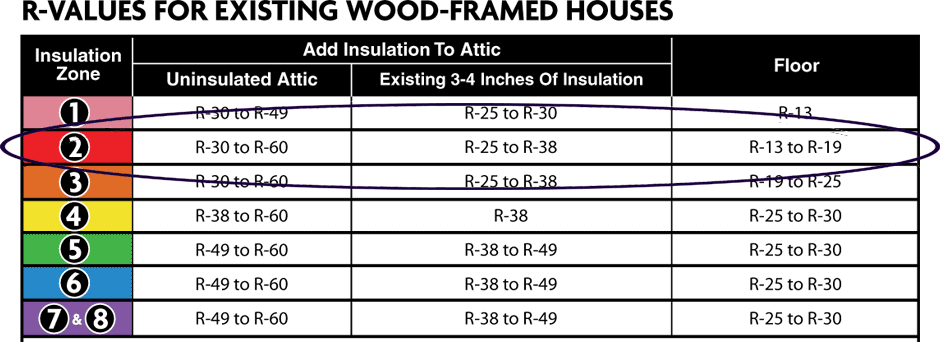The higher the r value the better the thermal performance of the insulation.
Attic insulation depth r value.
The total r value of installed insulation is calculated by multiplying its baseline r value times the depth of the insulation in inches.
The higher the r value the better the thermal performance of the insulation.
You can use the small pressurized cans of foam.
Achieving greater r values in exterior walls.
The table below shows what levels of insulation are cost effective for different climates and.
Some installations can yield a higher r value than traditional batt insulation for the same thickness and can fill even the smallest cavities creating an effective air barrier.
R value is a measure of insulation s ability to resist heat flow.
Cellulose insulation has a baseline r value of 3 8 per inch.
The higher the r value the better the thermal performance of the insulation.
Fiberglass 2 5 x depth.
Add the right kind of insulation.
In comparison an inch of blown fiberglass insulation has an r value of 3 1 3 4 and an inch of blown cellulose in an attic has an r value of 3 2 3 7.
Recommended home insulation r values.
For example if you have a type of insulation that has an r value of r 5 per inch of thickness you will need a depth of 6 inches of this insulation installed your attic to reach r 30 if you live in zones 2 or 3.
As a benchmark one inch of solid wood has an r value of 1.
R value is a measure of insulation s ability to resist heat traveling through it.
Foam in place insulation can be blown into walls on attic surfaces or under floors to insulate and reduce air leakage.
Insulation levels are specified by r value.
You can achieve better thermal performance in your attic by adding an additional layer of insulation.
Insulation level are specified by r value.
Along with knowing the r value of a particular insulation it is also important to calculate the r value of a total system.
What it probably is depth inches total insulation r value.
Light weight yellow pink or white.

